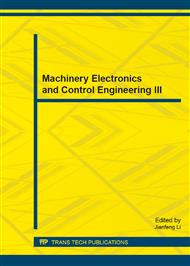p.360
p.364
p.368
p.372
p.376
p.380
p.384
p.388
p.393
Fault Diagnosis Method for the Train Axle Box Bearing Based on KPCA and GA-SVM
Abstract:
Online fault diagnosis for the train axle box bearings is a wide and important study topic since it plays a critical role in train safety. Due to the vibration signals nonlinear and non-stationary characteristics, accuracies of the methods such as neural network and hierarchical clustering are less than 90% which are not satisfying. In this paper, kernel principal component analysis (KPCA), a nonlinear process technique, was to tackle each signals 18 feature parameters for extracting the main features to reflect the signal characteristics. Then, in fault pattern recognition, support vector machine (SVM) based on genetic algorithm (GA) was used to identify the current fault type of the bearings, including normal, outer ring fault, inner ring fault and rolling element fault. The results show that the prediction accuracy of GA-SVM method reaches to 96.33%, which is quite effective.
Info:
Periodical:
Pages:
376-379
Citation:
Online since:
December 2013
Authors:
Price:
Сopyright:
© 2014 Trans Tech Publications Ltd. All Rights Reserved
Share:
Citation:


